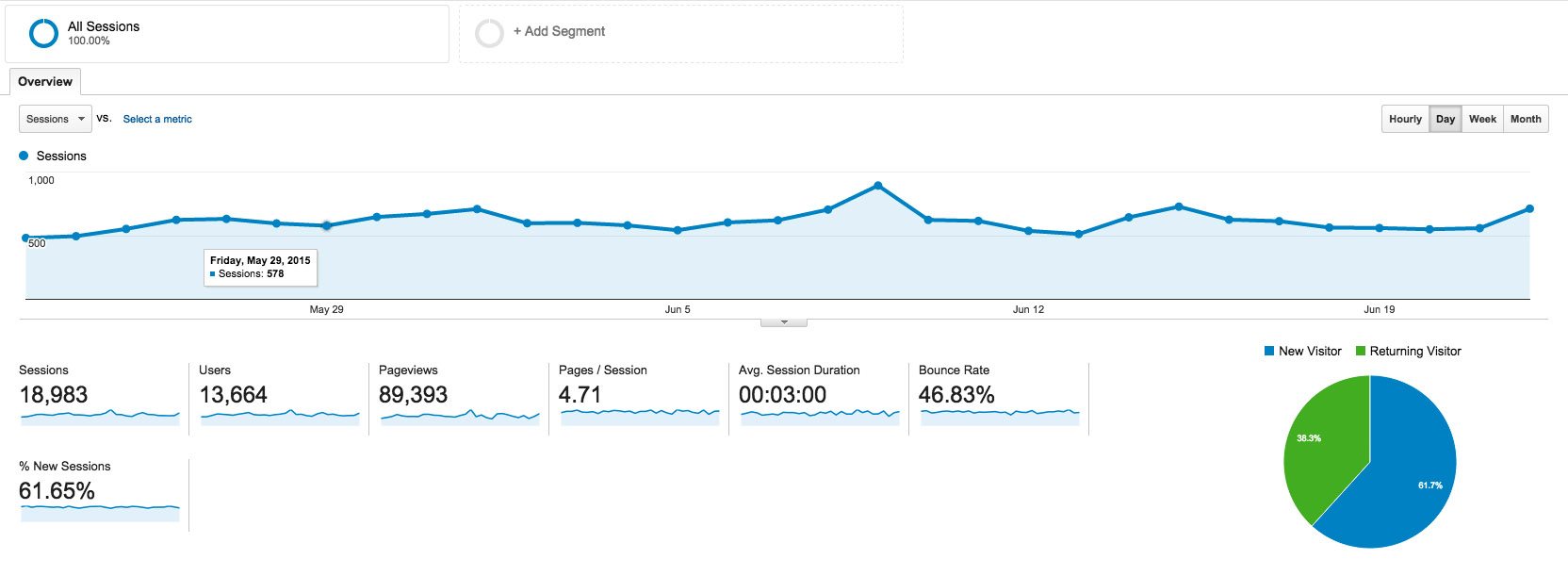In this series I’ll be talking about Google Analytics, and how to leverage statistics and reporting tools to not only make your real estate website amazing, but also to use that data in things like your listing presentation, price reductions and nearly every other aspect of your online presence.
First, I want to set some realistic expectations. So often, people jump into their Analytics and draw conclusions that aren’t true– panicking over a 45% bounce rate is a very reactionary approach. Keep in mind that it’s not always that simple. In fact, just a few months ago, we were working on a campaign and came to a conclusion that our average site visit time was too high. I’ll explain this later, but it’s a good example of Analytics being used creatively.
 How to Use Google Analytics
How to Use Google Analytics
Google Analytics isn’t always about trying to extrapolate meaning from a bunch of global stats. Instead I think it’s important to have clear marketing objectives first, and THEN use Google Analytics to measure precisely what you were trying to do, in that order. Now, this is what Dakno offers, so you could just ignore it and let the professionals take care of everything, but we want you to understand as much as possible about every aspect of your business. We value your unique expertise, and our goal is to make you as comfortable in your work as possible. So let’s dig in!
When you first log in to Google Analytics, you’ll see the Audience Overview page. This is a great page with helpful insights into your campaigns and visitors.
The first thing we’ll look at is how many people are actually visiting your site. Lead generation is very much a numbers game. With that in mind, the very first goal is getting people to actually visit your website. Building enough traffic should be your #1 objective, and in my opinion, you need to have at minimum about one thousand sessions a month (that’s 33 visitors a day). Without large numbers, you won’t have a significant enough sample to extract any meaningful data. It’s our priority to increase traffic to at least this amount before branching out.
The other thing to look at is the New Visitors vs. the Returning Visitors chart.

We know that in sales, it’s all about the follow-up. Imagine you only had one chance to get a potential seller to sign a listing agreement, with no follow-up allowed. I’m guessing your conversion rate would plummet. After all, every time you reach back out to someone, you exponentially increase your chance of closing that person. Yet agents don’t always think about this on their websites. They spend time and money driving lots of traffic in hopes of converting them on their first visit. That’s just a bad strategy. So here’s where this metric of New vs Returning visitors comes into play. It’s imperative that you have a game plan to get previous visitors back to your site after their first visit. Want a number to aim for? Between 35-50% returning visitors, and the more, the better. This is one of the most difficult goals, and we’ve talked about this before because it’s so important, but we’ll list off a few strategies below that we use at Dakno to help accomplish this mission.
1. Daily Email Updates
I know many of you probably have forced registration turned on, which means you’ve registered for a Property Organizer account where visitors can save their favorite properties and set up saved searches. However, not everyone who registers actually sets up a saved search for email updates when new properties match their criteria. So I would recommend going into their account, seeing what they were searching for and proactively setting up a saved search for them, based on their search history. They’ll start getting emails with relevant properties and links back to your site, which is exactly what you want.
This is also another reason why we recommend setting up these email alerts on your website instead of through your MLS. If they are set up in your MLS, the visitor gets a link to a generic page with no other engagement opportunities. But, if you set it up through your Dakno website, the email takes them back to your site where they can explore further. Remember, that’s a brand-building opportunity.
2. Email Drip Campaigns
Market reports, tips, and reminders about various resources on the site are all great ways to get traffic back to your site. Just be sure that your email drip campaigns provide links back to the site.
 3. Retargeting
3. Retargeting
With the Daily Email Updates and Drip Campaigns, both require that you have the visitor’s email address to actually get them back to the site. And we all know it’s virtually impossible to catalog 100% of your visitors’ email addresses, so those two strategies only capture a percentage of people you want on your site. That’s where retargeting comes in. It’s a great way to get traffic BACK to your site, which increases your Return Visit to New Visit ratio even without having to know an email address. You can read more about retargeting here.
 4. Print & Offline Campaigns
4. Print & Offline Campaigns
Finally, there’s the good old-fashioned mailings, business cards, billboard ads, bumper stickers, and TV commercials, which are all great ways to get people back to your site. Just be sure you are always promoting the website and have a clear call to action that sends them back to a landing page and gets them searching.
We have enough content for a second post, so we’ll break here and continue on another day. In the meantime, learn more about web traffic strategies by visiting the links above. Thanks for reading!
 your other subscriptions
your other subscriptions



